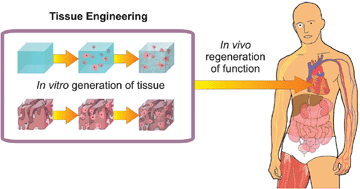Synthetic polymer scaffolds for tissue engineering
Abstract
The field of tissue engineering places complex demands on the materials it uses. The materials chosen to support the intricate processes of tissue development and maintenance need to have properties which serve both the bulk mechanical and structural requirements of the target tissue, as well as enabling interactions with cells at the molecular scale. In this critical review we explore how synthetic


 Please wait while we load your content...
Please wait while we load your content...